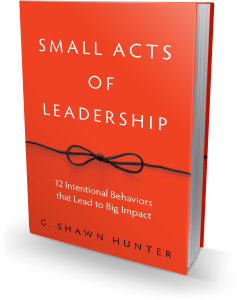Better Decisions Begin with More Beautiful Questions
Recently our family traveled to the Virgin Islands for a vacation. Our daily choices were pretty much reading, swimming, hiking, and sunsets. And snorkeling in beautiful warm water with beautiful, strange creatures.
Almost every day we would pick a beach, pack a lunch, towels and swimming gear, and head off on a small adventure. And each time our daughter Annie (10) went in the water, her eyes got wide, and she got excited about the fish, and coral, and turtles. She would come up gasping for breath, and ask questions. So many questions. Mostly questions I couldn’t answer.
Four year olds will ask roughly 300 questions a day. Yet we know from research that constant questioning likely drops off as kids gets older. Parents can get exasperated by the questions, and then kids grow up and take a job, and then their bosses get annoyed by the questions. Instead of listening, the boss will say “That’s not how we do things around here.”
It turns out that the creativity of American kids has been slowly declining over the past few decades. Researchers have been tracking it since the late 1950s.
Back in the 1950s Ellis Paul Torrance developed something he called a “Torrance Test” which is a series of creativity tests in which participants are asked to think of different ways to use objects (“How many ways can you use this paper clip?”), or compose different solutions to situations (“If your school closed, how would you complete your education?”) or hypothesize circumstances (“What happened when the cow jumped over the moon?”)
Questions are the basis of innovation, the basis of personal change. More beautiful questions drive quality, and excellence, and demand more beautiful answers.
“Without a good question, a good answer has no place to go.”
– Clayton Christensen
Try this three-part process, developed by Warren Berger, to move from stuck to unstuck, from stagnant to inventive.
First ask Why?
Second only to Thomas Edison for naming patents, Edwin Land was the Steve Jobs of the 1940s. Brilliant, inventive, and constantly curious, the two-time Harvard dropout was on vacation with his family in New Mexico when he decided to gather his family for a photograph using a contemporary film camera. Land took the picture, and then his daughter asked to see it. He explained about dark rooms, and processing film, and so forth.
His daughter asked, “Why do we have to wait? You already took the picture.”
Next ask What If?
Land once described to Steve Jobs how he envisioned the Polaroid completely, before he ever embarked on the process, “I could see what the Polaroid camera should be. It was just as real to me as if it was sitting in front of me before I had ever built one.” The exercise here is to see the potential, the possibility, in your mind. Don’t ask How, that comes next. In this phase, ask only “If it were possible, what would it look like?”
The question Land asked was, “What if you could somehow have a darkroom inside a camera?”
Now ask How?
To answer “What if you could have a darkroom inside a camera?” Land had to draw upon everything he knew in chemistry, engineering, optics, and mechanics. He sought out his colleagues, friends and researchers to mine their knowledge. He reached deep into his network, described his vision, and enlisted anyone with expertise willing to contribute.
The How part has many many questions, such as “How do we do this in color?” and “How do we make it lighter?” and “How do we keep the chemicals from evaporating?”
Why is about seeking to understand. What if is about envisioning possibilities. How is about doing, executing, and creating. Too often we start with How or What. Don’t start with How, start with Why.
And if you can take a few F-bombs, and colorful language, here is Louis CK on kids and questions. Amusing. Here is the Louis CK video. Enjoy.
To learn about how questions can drive Innovation and Transform Mindsets see:
- Steve Shapiro on Out-Innovate the Competition
- Marilee Adams on Question Thinking: The Key to Transforming Mindsets
- ____________________________________________________
- You might enjoy this related article
- Join my Email updates for more realistic optimism
- Learn more about my Speaking work
 Shawn Hunter is President and Founder of Mindscaling, a company building beautiful online learning courses based on the work of best-selling authors. My new book Small Acts of Leadership, (Bibliomotion) will be out in October, 2016. You can pre-order a copy now.
Shawn Hunter is President and Founder of Mindscaling, a company building beautiful online learning courses based on the work of best-selling authors. My new book Small Acts of Leadership, (Bibliomotion) will be out in October, 2016. You can pre-order a copy now.
Twitter: @gshunter
Say hello: email@gshunter.com
Web: www.shawnhunter.com



